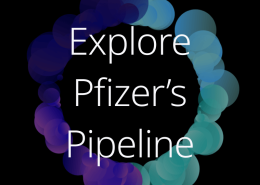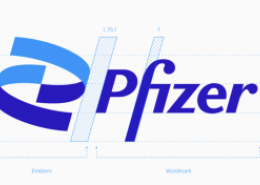DILIsym Services, Inc. Evaluates Prospective NAFLD Treatment, Utilizing Its Flagship Technology in Collaboration with Pfizer, Inc.
Companies will present preliminary results at ASCPT on March 17 in Washington, D.C.
Research Triangle Park, N.C., March 17, 2017 – DILIsym Services, Inc. presented today results from a collaborative study with Pfizer Inc. (NYSE: PFE) at the 2017 Annual Meeting of the American Society for Clinical Pharmacology and Therapeutics (ASCPT) conference in Washington, D.C. The study, titled “QSP Modeling of Liver AMPK Activation Using NAFLDsym™ is Predicted to Reduce Steatosis in NAFLD Patients,” is a collaborative effort between scientists at both companies to utilize a novel mathematical modeling tool to predict the improvement for patients with non-alcoholic steatohepatitis (NASH) and non-alcoholic fatty liver disease (NAFLD) following treatment with a new potential therapeutic being developed by Pfizer. The collaboration utilizes DILIsym Services’ quantitative systems pharmacology (QSP) modeling software, NAFLDsym™.
NAFLDsym™ can be used to evaluate novel treatments for NASH and NAFLD by utilizing NAFLD SimPops™ (simulated populations) to predict clinical efficacy. In the study, the predicted efficacy of a specific NAFLD therapeutic target was evaluated. Candidate drugs can also be evaluated by employing key laboratory and/or clinical data describing DMPK and pharmacodynamic characteristics, enabling pharmaceutical companies to prioritize compounds and targets. Additionally, NAFLDsym™ can be used to help optimize clinical trial protocols by determining favorable dosing paradigms and outcome measurement frequency (i.e., liver fat reduction). The current work is the latest success in an ongoing collaboration between DILIsym Services, Inc. and Pfizer utilizing NAFLDsym™ to evaluate specific liver enzymes as targets for effective NASH/NAFLD treatments.
NAFLDsym™ includes many of the primary components of NASH/NAFLD pathophysiology: Steatosis, regulation of liver triglyceride and fatty acids, lipotoxicity, liver injury and proliferation, hepatocellular bioenergetics, innate immune system and inflammatory mediators, dynamic body weight and its effects on lipids, and biomarkers (e.g., ALT, AST, cytokeratin cleaved K18). These mechanistic components are combined in NAFLDsym™ to generate >300 simulated NAFLD patients. Reflecting clinical patient populations, these populations of simulated NAFLD patients (SimPops™) not only have steatosis, but many also have liver injury (e.g., elevated ALT). NAFLDsym™ is an adaptation of DILIsym Services, Inc. flagship predictive liver injury software, DILIsym®.
“NAFLD is emerging as the primary cause of serious liver disease worldwide, and there are no clearly effective drug treatments for this condition as of yet. NAFLDsym™ is showing great promise to guide and accelerate the development of new medicines to treat this condition,” said Paul Watkins, Professor of Pharmacy, Medicine, and Public Health at The University of North Carolina at Chapel Hill (UNC) and the Director of the University of North Carolina Institute for Drug Safety Science and DILIsym Services, Inc. Chairman of the Board of Directors.
“For a condition with limited treatment options, a platform like the NAFLDsym could potentially influence the way patients with NAFLD/NASH receive treatment. With the ability to evaluate and compare multiple therapeutic targets, we can potentially prioritize therapies or combination therapies that can have a more positive impact for the patient.,” said Morris Birnbaum, Senior Vice President and Chief Scientific Officer, Internal Medicine, Pfizer.
About NAFLD and NASH
Non-alcoholic steatohepatitis (NASH) is an advanced stage of non-alcoholic fatty liver disease (NAFLD), which is categorized at early stages as excessive fat accumulation in the liver, and it is mostly asymptomatic. NASH develops when excess fat accumulates in the liver (>5% liver fat) accompanied with inflammation and hepatic cellular injury. While fat accumulation in the liver alone does not correlate with increased morbidity or mortality, the progression to NASH increases the risk of cirrhosis, liver failure and liver cancer. Morbidity and mortality from liver diseases are increased in patients with NASH, and they correlate strongly with the morbidity and mortality of cardiovascular diseases.
The prevalence of NASH in the general U.S. population is estimated at 3-5% and around 2-4% globally. NASH is mostly diagnosed in patients with obesity, diabetes, high cholesterol and triglycerides levels, and insulin resistance. With currently no approved therapies to treat NASH, this is an area of great unmet medical need.
References:
Armstrong et al, Hepatology 2014
Chalasani et al, Hepatology 2012
LaBrecque et al, J Clin Gastroenterol 2014, & WGO Global Guideline, 2012
Lazo et al, Am J Epidemiol 2013
Sanyal et al, Clinical Liver Disease 2015
Vernon et al, Aliment Pharmacol Ther 2011
Williams et al, Gastroenterology 2011
Younossi et al, Hepatology 2011
Younossi et al, Hepatology 2016
Wree, et al, Nat Rev Gastroenterol Hepatol 2013
About DILIsym Services, Inc.
DILIsym Services, Inc. is a leader in quantitative systems toxicology (QST) and quantitative systems pharmacology (QSP), providing software and consulting to improve the safety and efficacy profiles of therapeutics reaching the market. DILIsym Services, Inc. has programs in NAFLD and drug-induced liver injury, employing the QSP platform NAFLDsym™ and the QST platform DILIsym®. Moreover, DILIsym Services, Inc. is the coordinating member of the DILI-sim Initiative, a consortium comprised of 12 pharmaceutical companies with the goals of the DILI-sim Initiative including developing the DILIsym® software and advancing the knowledge of DILI for the benefit of the scientific community and the public at-large. More information about NAFLDsym™ software can be found at www.dilisym.com (http://www.dilisym.com/Products-Services/nafldsym.html).
DILIsym Services, Inc. Contact:
Scott Q. Siler (ssiler@dilisym.com)
President
510.470.3452








